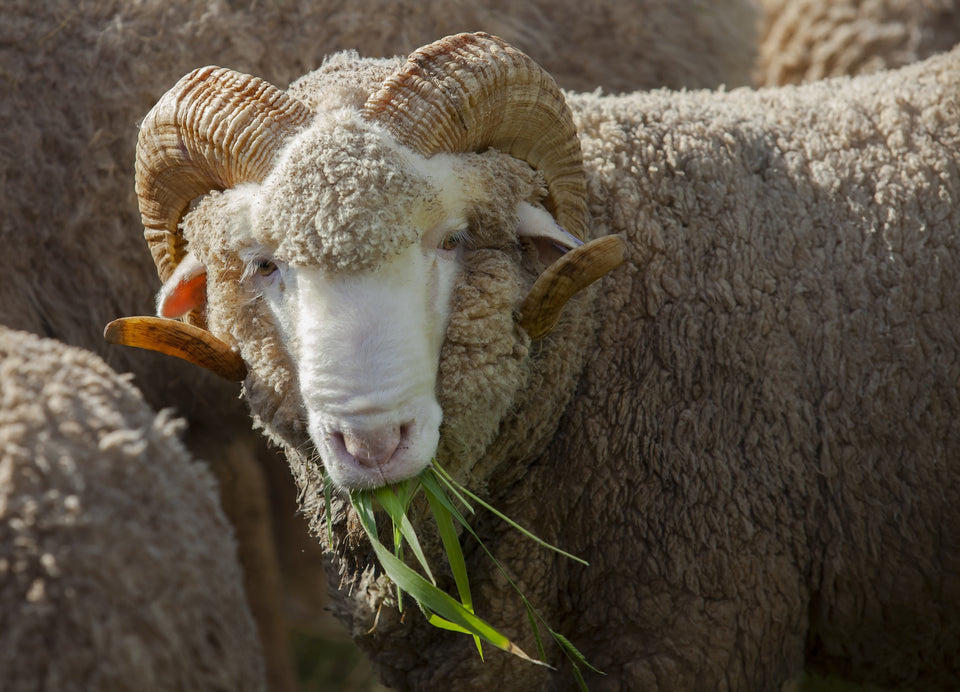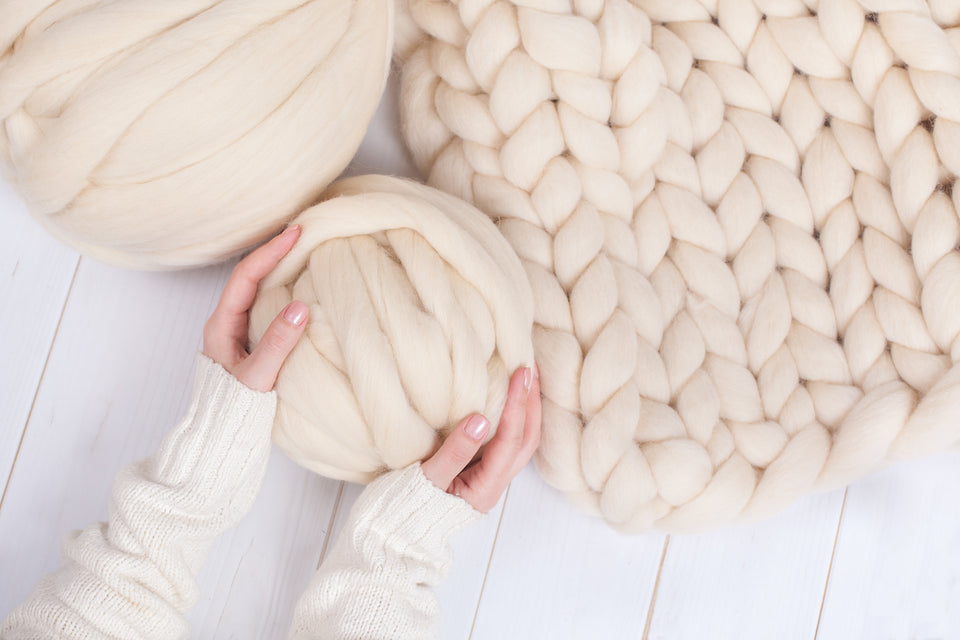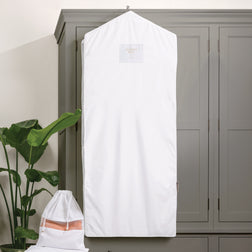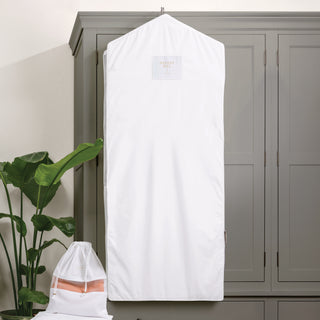When you have invested in your wardrobe and want to extend its longevity, caring and storing it properly is critical. Read this article and follow the steps to salvage your Merino wool garment.
It’s likely that if you are reading this, you aren’t looking for facts about wool to amaze your friends at your next dinner party. Likely, you are having a clothing fiasco on your hands. Perhaps your favourite wool sweater was accidentally put in the wash, and it has shrunk.
All is not lost. Your wool item may be restored to its original condition.
But first, it may be helpful to know some basic information about Merino wool so you will better understand why shrinking happens and how you can fix it.
Where Does Merino Wool Come From?
Merino wool is named for Merino sheep, a breed thought to have originated in Morocco and later found in southwestern Spain. Prior to the 18th century, flocks of Merinos were seldom found outside of Spain as exporting the sheep outside the country could result in the death penalty.
Now, you can find Merino sheep all over the world, and they are a popular breed in many countries.
Merinos must be shorn at least once a year to prevent them from overheating, going blind, or having other health issues.

What Makes Merino Wool So Special?
Good quality Merino wool is soft to the touch and incredibly comfortable to wear. In fact, many Merino wool garments are made to be worn underneath other types of clothing, particularly in climates where temperatures are extreme or change rapidly. Merino wool is the ultimate multi-tasker; it can keep you warm and cool you down.
The bends in each strand of wool create vented layers that trap warm air. And, if you start to perspire, the wool wicks the moisture away. That means the wool absorbs your body’s sweat and releases it as a vapor. Other clothing can trap your sweat against your skin, which keeps your body from cooling itself down.
What Determines Merino Wool’s Quality
The quality of Merino wool also varies widely. Where the Merino sheep live and who manufactures the wool both contribute to the wool’s quality.
A sheep’s ultimate purpose also plays a role in the quality of its wool. Sheep that are bred for mutton produce wool but it is not suitable for clothing.
The inconsistency in quality of different lots of Merino wool is why we recommend shoppers purchase garments only from trusted retailers.
Know Your Wool: Merino vs Other Common Types
In addition to Merino, there are other types of wool such as cashmere and mohair that make excellent garments. In order to know if Merino wool is the right choice for you, let’s compare it with other wool types.

Is Merino the softest wool?
No. Though high-quality Merino wool is soft, it is certainly not the softest wool on the market. The length of a strand of wool and its thickness are good indicators of how soft any given wool garment might be. For softer wools, consider cashmere, angora, or lamb’s wool.
Is Merino the warmest wool?
No. Wool made from oxen found in the Arctic produces garments believed to retain heat much better than many other types of wool. However, this type of wool may only be suitable for outerwear garments, whereas Merino wool is comfortable enough to wear close to the skin.
Is Merino the most expensive wool?
No. Though items made from Merino wool are not cheap, they are certainly not the most expensive wool to buy. Antique rarities aside, the Peruvian vicuna, an animal related to the alpaca, produces the most expensive type of wool in the world. Vicunas are closely protected and exclusive to Peru.
So, if Merino wool isn’t the softest, the warmest, or the most expensive type of wool, why is it popular?
Simply because Merino wool is the best balance of comfort, function, and cost when compared with other types of wool.
Best Practices: How to Wash Merino Wool
If this is your first time washing a wool garment, review our in-depth guides on how to hand-wash or machine-wash your favourite pieces. In the meantime, here are a few quick helpful tips to keep in mind to avoid shrinkage:
-
Start fresh. If you’re hand-washing a garment in a tub, sink, or bucket, then you need to make sure the container is free of anything that could stain or damage the wool. Even if you can’t see anything with the naked eye, it’s best to fully wash and rinse the container before you start hand-washing.
Before using a washing machine to clean the garment, run an empty rinse cycle if you used bleach or harsh chemicals in the cycle prior.
- Stay cool. As much as possible, keep your wool garments away from heat sources. Don’t use hot or warm water when you wash and rinse, and don’t leave your garment out to dry near a vent or radiator.
- Wash Merino wool gently. Specifically, use a gentle soap and gentle agitation to wash the garment. You should never scrub or stretch the wool when you wash it. Swirling the water around it gently can help circulate things if you want to make sure you’re cleaning the piece thoroughly.
- Rinse thoroughly. Don’t let the caution to be gentle cause you to leave behind remnants of soap. Even though wool-safe detergents don’t have any harsh chemicals, any soap can leave a residue that impacts the integrity of a textile. Diluted vinegar rinses can help reduce product build-up too.
- Dry carefully. Just as you should never stretch wool when washing and rinsing it, you should never hang it to dry. The weight of the garment will cause it to lose its shape by stretching out too much in some areas and shrinking up in others. Also make sure your garment is completely dry before you put it into storage to avoid long-term damage or an increased risk of clothes moth infestation!
How To Unshrink Merino Wool Clothing
Now that you know the basics about Merino wool, let’s discuss the problem at hand.
Maybe you forgot to separate your laundry, and your favourite merino wool leggings wound up going through a regular wash and dry cycle leaving you with a pair of baby trousers.
Perhaps your husband thought he was doing you a favour by tossing your wet wool socks in the dryer and now you’ve got a new golf headcover.
Whatever the circumstance that caused the mishap, the steps necessary to fix your Merino wool item are the same:
-
Fill a tub or sink with lukewarm water.
Moisture, heat, and agitation are the three main reasons Merino wool shrinks. Fortunately, we can use some of those techniques to reverse the shrinking process.
-
Dissolve a generous amount of conditioner in the water.

You can find wool-specific conditioners that are made to help with this process, but many people use their own hair conditioner. It can also help the conditioner and water combine more thoroughly if you add a bit of your usual detergent.
-
Allow the Merino wool garment to soak for several minutes.
You can speed up this process by gently squeezing the garment so that the conditioner can move through every layer properly. A 20-minute soak should be long enough to fully moisturise the item.
-
Squeeze out any extra water; then lay the piece flat on a towel.
If you’re working with an item that’s bigger than your largest towel, you can use a sheet or a blanket. You can also layer another towel, sheet, or blanket on top to assist you in getting out all the excess water.
-
Reshape, then repeat as needed.
After you’re done squeezing out as much water as possible, you’ll need to work carefully in small sections to stretch your garment back to its original shape. You should do this incrementally and in stages before the garment dries completely. Do not use clips or weights to hold any part of the garment in place.
-
Wash and dry the Merino wool item again.
Once you’re satisfied with the reshaping and the garment is completely dry, you will need to wash the remnants of conditioner out of it before you can wear the item or store it again. Be careful to use only cool water and dry the garment flat, away from heat and light sources.

In most cases, following these steps will salvage your Merino wool garment.
When you have invested in your wardrobe and want to extend its longevity, caring and storing it properly is critical.
It’s important to launder any type of quality garment with the utmost care and store it in a way that protects it from any damage. Ensure the pieces you love are well protected with Hayden Hill’s sustainable and beautiful garment care.








